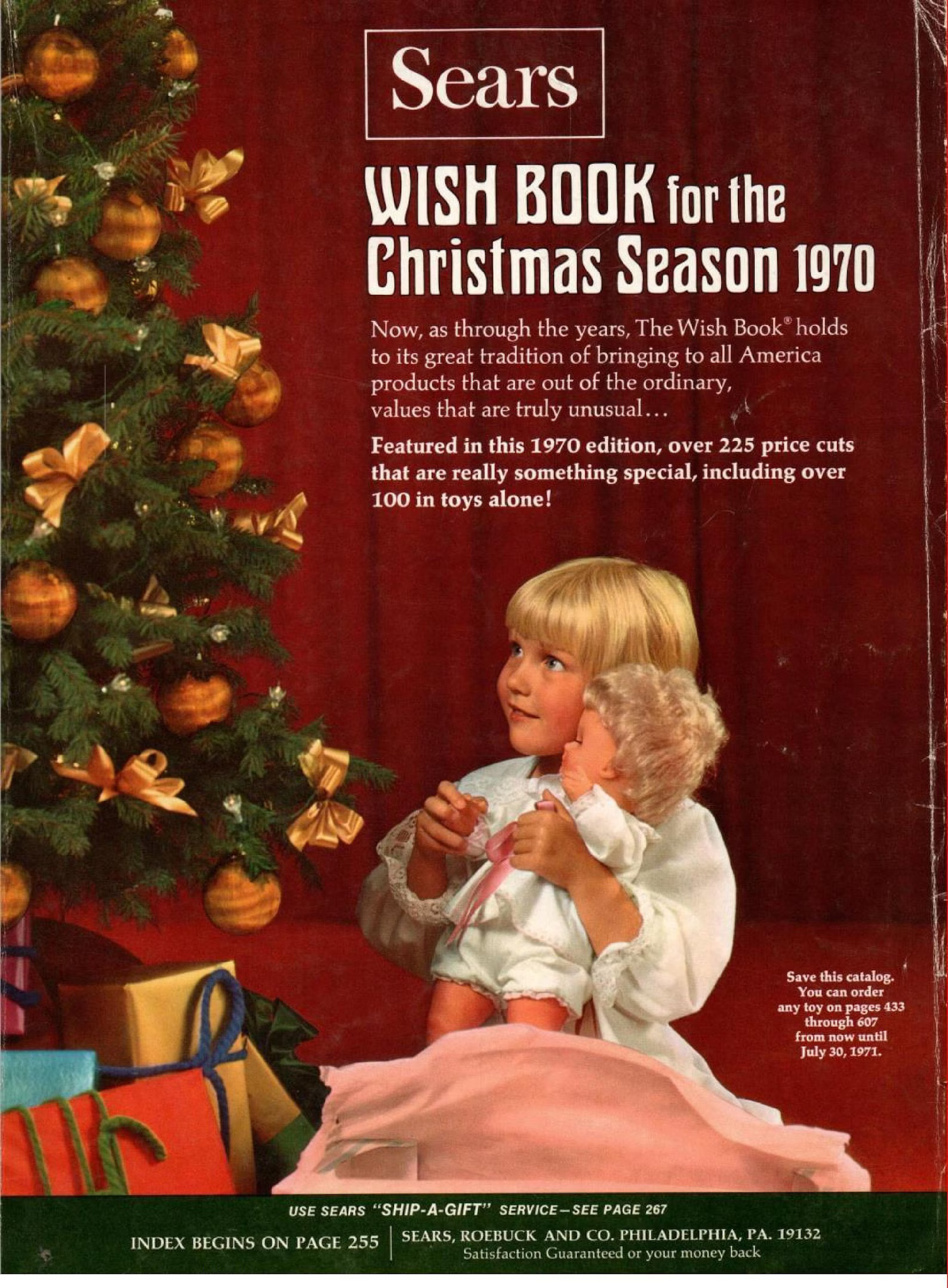Children of the ’70s, please gather ’round. Although not a television special, we’re going back in time for some nostalgic fun and holiday cheer. Today, we’re talking about Wishbooks—the Christmas catalogs of our youth. The Christmas Bible, if you will. Whether it was Sears, Montgomery Ward, JCPenney, or another department store, these catalogs were a much-anticipated staple of the season.
What is a Christmas Catalog?
Christmas catalogs were telephone-book-sized tomes from department stores, showcasing everything anyone could ever want for Christmas. Sure, they featured adult items like clothes, pots and pans, or fishing rods—but let’s be real: these voluminous books weren’t geared toward grown-ups. They were meant for kids feverishly making out their Christmas lists.
I mostly remember Saturday mornings: cartoons blaring, and the catalog being passed around between me and my brothers and sisters. We’d write out our lists, circle the items we wanted most, and dog-ear the pages so we could refer back to them, and we did, many times over.

Most of the time, our efforts didn’t pay off. My parents weren’t big believers in “commercial” Christmas gifts. They were all about “educational” toys. It also didn’t help that we were on the lower end of the income scale.
Toys with batteries? Absolutely out of the question. If, by some Christmas miracle, we did receive a toy that required batteries, the battery compartment would remain empty. We never truly knew what those toys could have been. Still, we tried. And occasionally, it paid off.
What’s in a Christmas Catalog?
Parents loved those oversized Christmas catalogs because they kept kids occupied for hours. First stop: the toy section, of course. We circled our dream toys, each kid using a different color, and added stars next to the ones we really wanted. Once we finished with the toys, we’d move on to bikes and Big Wheels. And to avoid giving up the catalog to our siblings, we’d pretend to be interested in every page—even the boring ones. Kids’ furniture and clothes were mildly interesting, but we skipped over sections with couches, housewares, and bathrobes as quickly as possible.
We didn’t use Wishbooks to pick out the parent-approved staples that showed up every year anyway—things like jacks, pick-up sticks, or the ever-present ball. Those were givens, along with stocking stuffers like chalk, pencils, Elmer’s Glue, and Play-Doh that inevitably dried out by February.
Despite all the circling and starring, our parents stayed firm in their quest to deliver gifts that taught us something. No Rock ‘Em Sock ‘Em Robots. No Little Kiddles. No Click Clacks or Slinkies.
But one year—I still remember—I actually got a Waterful Ring Toss. I couldn’t believe it. A mainstream toy from the Sears Christmas catalog. Not generic. Not crafty. No instruction manual the size of a novella. Just pure, simple, ready-to-play fun. I tried to contain my joy, just in case my parents realized their mistake and returned it for a latch hook kit or paint-by-numbers set.

Now, I don’t want it to sound like Christmas was disappointing at our house—because it wasn’t. I’ll never forget the year I got a red bicycle with a flower basket, filled with a plastic tea set (similar to this one) and a knockoff Barbie doll. Another year, I got a dollhouse (similar to this one) that kept me entertained for years. I don’t think any of these items were circled in the Wishbook, but despite the lack of catalog presents, our Christmases were the stuff of dreams.
Christmas Catalogs Were…Magic
Here’s the thing about Christmas in the ’70s: a lot of it was about optics. It was about the magic.
We’d head into the city to look at the mechanical displays—people ice skating, sledding, baking cookies in shop windows. We’d stop in the middle of the street, mouths agape, staring at the Christmas lights. We admired trees, porches, and rooftops decked out with glowing Santas and plastic carolers. The lights, the displays, the catalogs—they all added to the magic.
But the best part of Christmas wasn’t circling toys in a catalog or even opening presents. It was after all the opening. It was sitting together in the dim glow of tree lights and window lights, surrounded by torn wrapping paper and half-eaten candy canes. That was when we each had a new favorite toy in our lap, maybe a Christmas special playing on the TV, the family laughing and passing around leftover cookies.
We may not have been rich in a monetary sense, but on Christmas night, we were the luckiest, happiest family in the world.



2 thoughts on “Wishbooks: A Look at Christmas Catalogs of the ’70s”